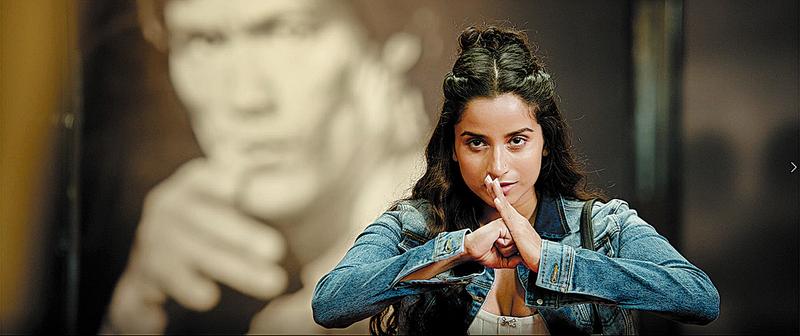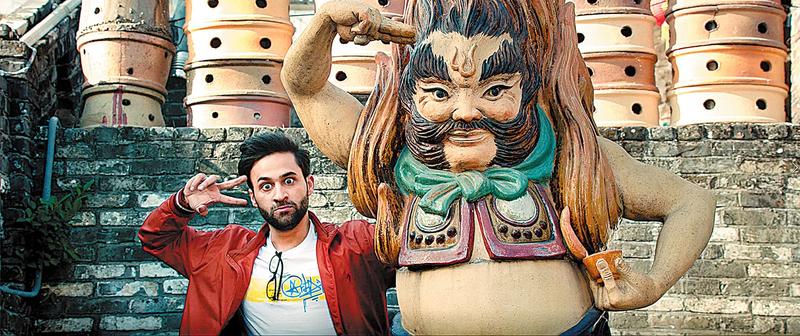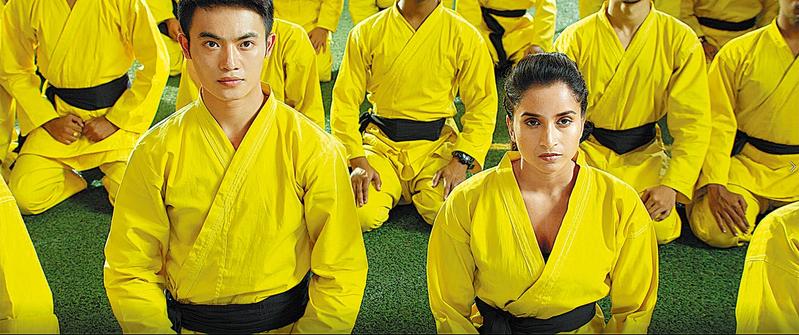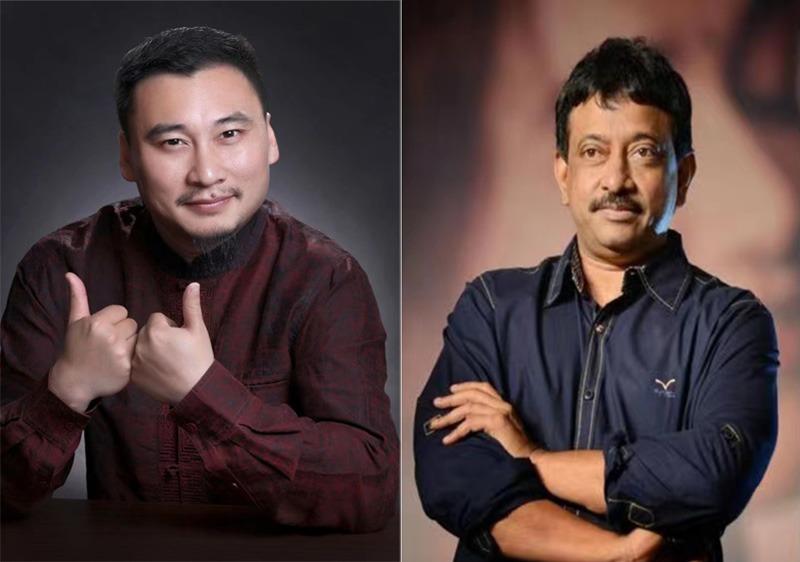Joint production packs a punch as heroine takes on the baddies, Xu Fan reports.
 In the film Ladki: Enter the Girl Dragon, Indian actress Pooja Bhalekar stars as a martial artist who fights in the style created by Bruce Lee. (PHOTO PROVIDED TO CHINA DAILY)
In the film Ladki: Enter the Girl Dragon, Indian actress Pooja Bhalekar stars as a martial artist who fights in the style created by Bruce Lee. (PHOTO PROVIDED TO CHINA DAILY)
Nearly half a century after kung fu legend Bruce Lee departed this world, an upcoming movie, inspired by his last blockbuster, Enter the Dragon, has seen Chinese and Indian filmmakers join together to pay tribute to his legacy.
Ladki: Enter the Girl Dragon, scheduled to open domestically and in India in summer, is the first such Sino-Indian coproduction to introduce a heroine's perspective.
I realized how impossible it is to even reach anywhere near Lee’s ability; I abandoned my dream of following in his footsteps and settled for the far less painful, and much easier, art of filmmaking.
Ram Gopal Varma, Indian director
Since the two countries signed a movie agreement in 2014, two coproduced blockbusters have come about: the Jackie Chan-led Kung Fu Yoga and the Wang Baoqiang flick Buddies in India, both released in 2017 and recounting the exotic adventures led by predominantly male characters.
The new movie has been shaped by Indian director Ram Gopal Varma's obsession with Lee, a legend who passed away at age 32 in 1973, but is still revered as a global icon for his unique contribution to promoting Chinese kung fu.
Varma, born in Hyderabad, the capital of Andhra Pradesh state in India, when he was 14, walked more than 20 kilometers to the nearest cinema to watch Enter the Dragon, according to Wu Jing, the chief producer.
Recalling that her studio, Big People Film, based in Shenzhen, Guangdong province, held a forum to discuss cultural exchanges during the China (Shenzhen) International Cultural Industry Fair in 2017, Wu says that it has paved the way for her introduction to Varma, who had, at the time, been preparing the project for several years.
 Actor Parth Suri travels to Foshan, Guangdong province, in the movie. (PHOTO PROVIDED TO CHINA DAILY)
Actor Parth Suri travels to Foshan, Guangdong province, in the movie. (PHOTO PROVIDED TO CHINA DAILY)
With the Chinese company getting on board in 2018, the crew, consisting of nearly 200 members, started shooting in early 2019, with all the scenes filmed in Mumbai and Hyderabad in India, and Foshan in South China's Guangdong province, the ancestral hometown of Lee.
"The movie will give the Chinese audience a fresh perspective," says Wu. "In most Indian films, women are wrapped up in colorful saris, looking soft and beautiful. But Ladki tries to examine how strong a woman can be in her determination to protect her family and defend her dignity."
Starring Pooja Bhalekar, a Mumbai-born martial artist and actress, as the female protagonist, the tale follows her journey to learn kung fu after witnessing her elder sister being sexually assaulted and murdered.
Chinese actress Muqi Miya, known for Kung Fu Yoga, and Shi Tianlong, a martial artist and actor, respectively play a fellow student, and the master of the female protagonist, who realizes her dream to study at a kung fu school in India.
Overcoming a string of difficulties, from India's rainy season to the language barrier, the movie manages to blend cultural and geographical characteristics of the two countries, as well as demonstrating the distinctive architecture and scenery representing southern China, says Liu Jing, the Chinese director who co-helms the movie with Varma.
Also a huge fan of Lee, Liu describes the late icon as his "spiritual mentor" giving him strength and confidence while facing huge odds.
 The female protagonist attends a kung fu school. (PHOTO PROVIDED TO CHINA DAILY)
The female protagonist attends a kung fu school. (PHOTO PROVIDED TO CHINA DAILY)
Aside from the lightning kicks, hits and punches, Lee's profound understanding of kung fu, with its roots taken from ancient Chinese philosophy, has also captivated generations of fans.
"Empty your mind, be formless, shapeless-like water. Now you put water in a cup, it becomes the cup. You put water into a bottle, it becomes the bottle. You put it in a teapot, it becomes the teapot," Lee once explained about the core of Jeet Kune Do (the Way of the Intercepting Fist), a martial arts style created by him. The words are cited from Be Water, My Friend: The Teachings of Bruce Lee, a book penned by his daughter, Shannon Lee.
"The stunts of Jeet Kune Do, as a tribute to Bruce Lee, is one of the top draws in the film," says Liu. "It is shown in the movie how to 'be like water'."
Describing the movie as "the first time a martial arts film has been made with a woman as a protagonist and fighting in the Bruce Lee style" in India, director Varma recalls his vision.
"Ever since I saw Enter the Dragon, I have always wanted to make a martial arts film based on my theoretical study of Bruce Lee's style and his philosophy. And since it's going to be almost impossible to find a male protagonist to fit the role, I decided to cast a female, which, in turn, led me to Bhalekar," he says.
 Chinese director Liu Jing and Indian director Ram Gopal Varma, who co-helmed Ladki: Enter the Girl Dragon, a coproduction that pays tribute to the legacy of kung fu legend Bruce Lee. (PHOTO PROVIDED TO CHINA DAILY)
Chinese director Liu Jing and Indian director Ram Gopal Varma, who co-helmed Ladki: Enter the Girl Dragon, a coproduction that pays tribute to the legacy of kung fu legend Bruce Lee. (PHOTO PROVIDED TO CHINA DAILY)
Enter the Dragon was released one month after Bruce Lee's death, becoming one of the most profitable martial arts movies in history and drawing many enthusiastic fans across the world to study kung fu.
"Lee, for me, was like a real-life Howard Roark (a character in the 1943 Ayn Rand novel, The Fountainhead, who follows his ideals)," says the Indian director.
"Needless to say, after a few sessions of trying to learn martial arts, I realized how impossible it is to even reach anywhere near Lee's ability; I abandoned my dream of following in his footsteps and settled for the far less painful, and much easier, art of filmmaking.
"Through Bhalekar's character, I want to convey that even she can be as powerful as someone like Lee," he adds.
Viewing habits in the two countries differ, with an average Indian film spanning around three hours, with an intermission. The movie will have two versions-105 minutes for China and 130-plus minutes for India-to cater to audiences in both countries.
"As the two neighboring countries both boast a long history and rich culture, China and India have seen cultural exchanges since ancient times," says Liu. "Sort of like a universal 'language' to go beyond borders, movies can help us to foster cultural communication and boost more cooperation."
Contact the writer at xufan@chinadaily.com.cn


